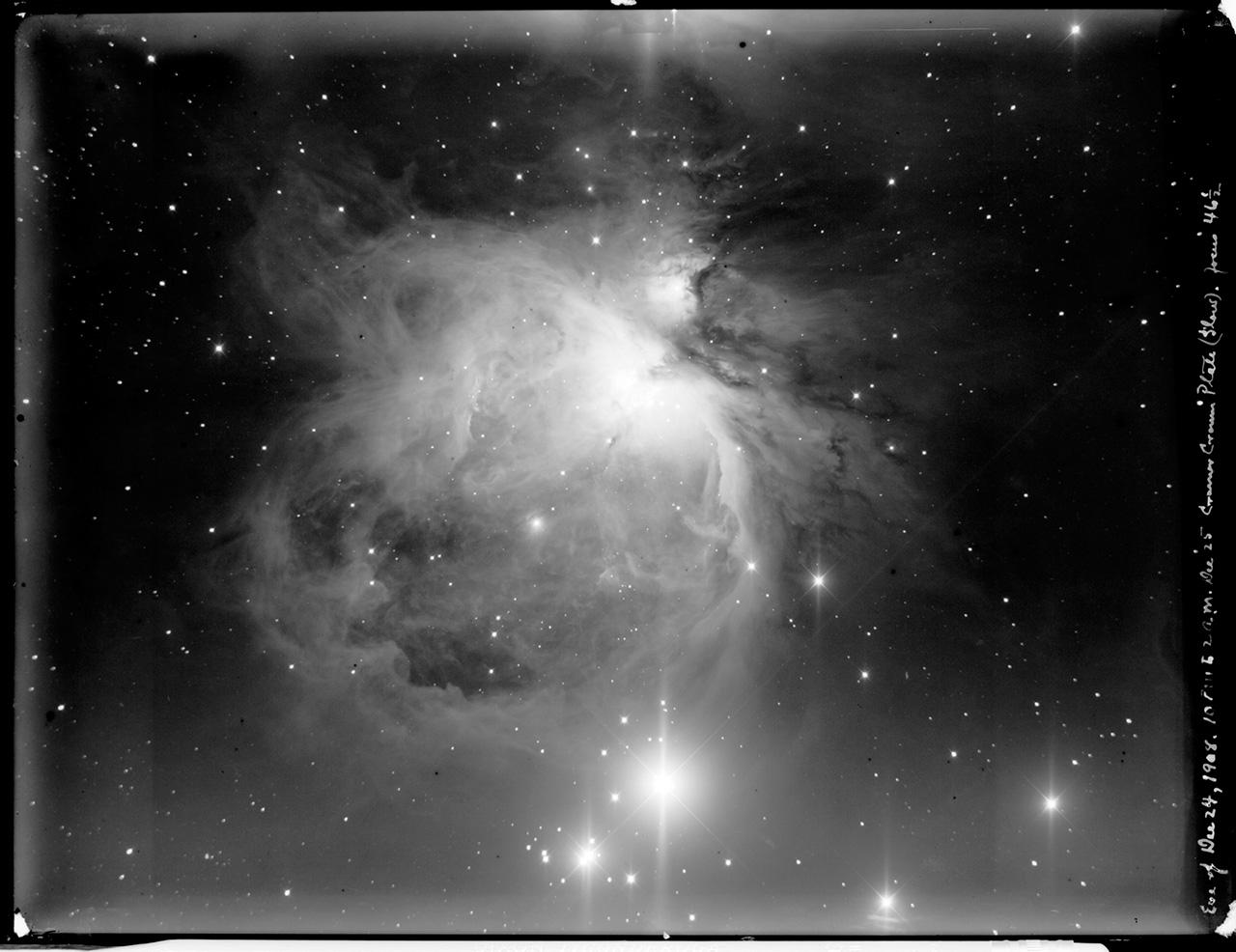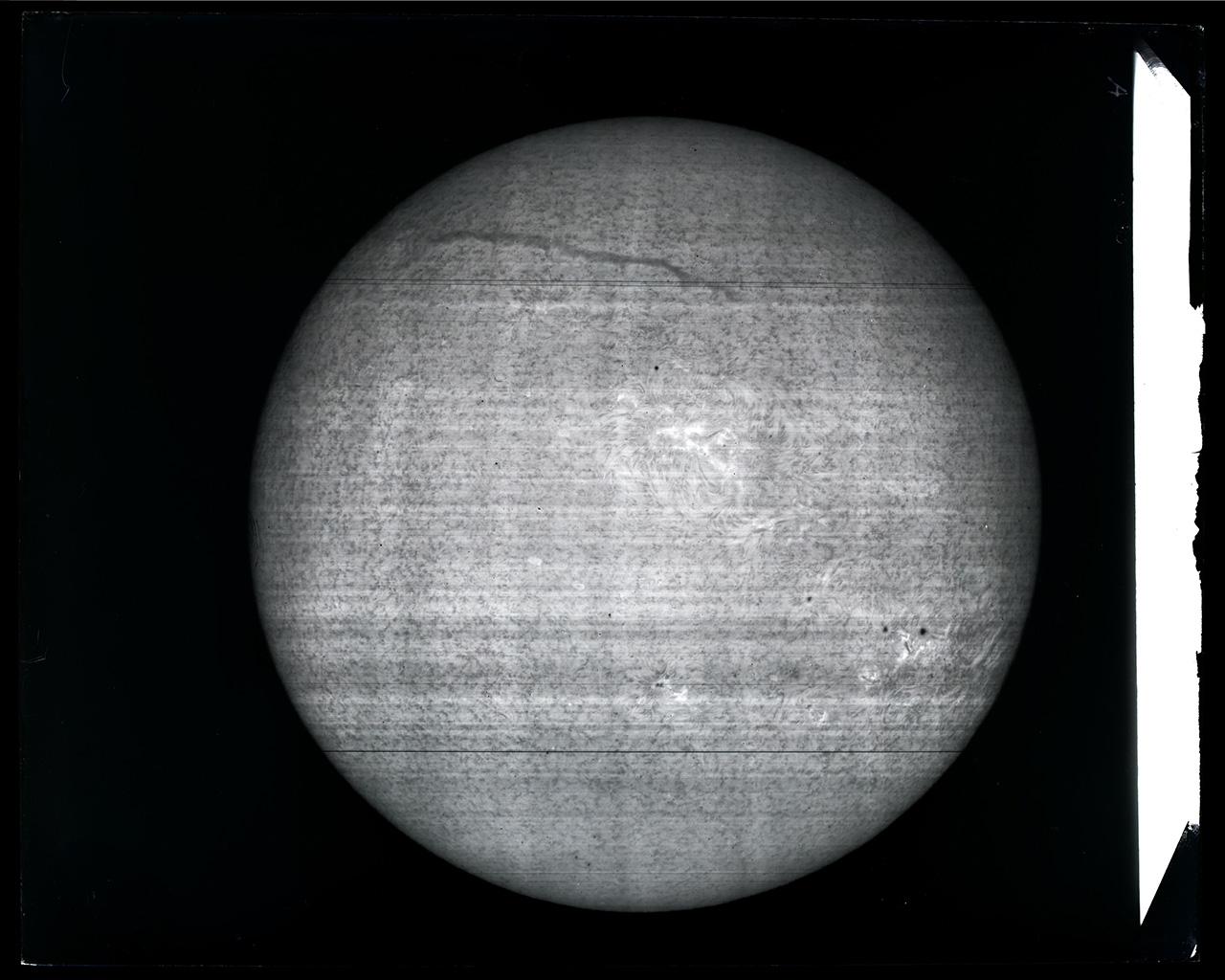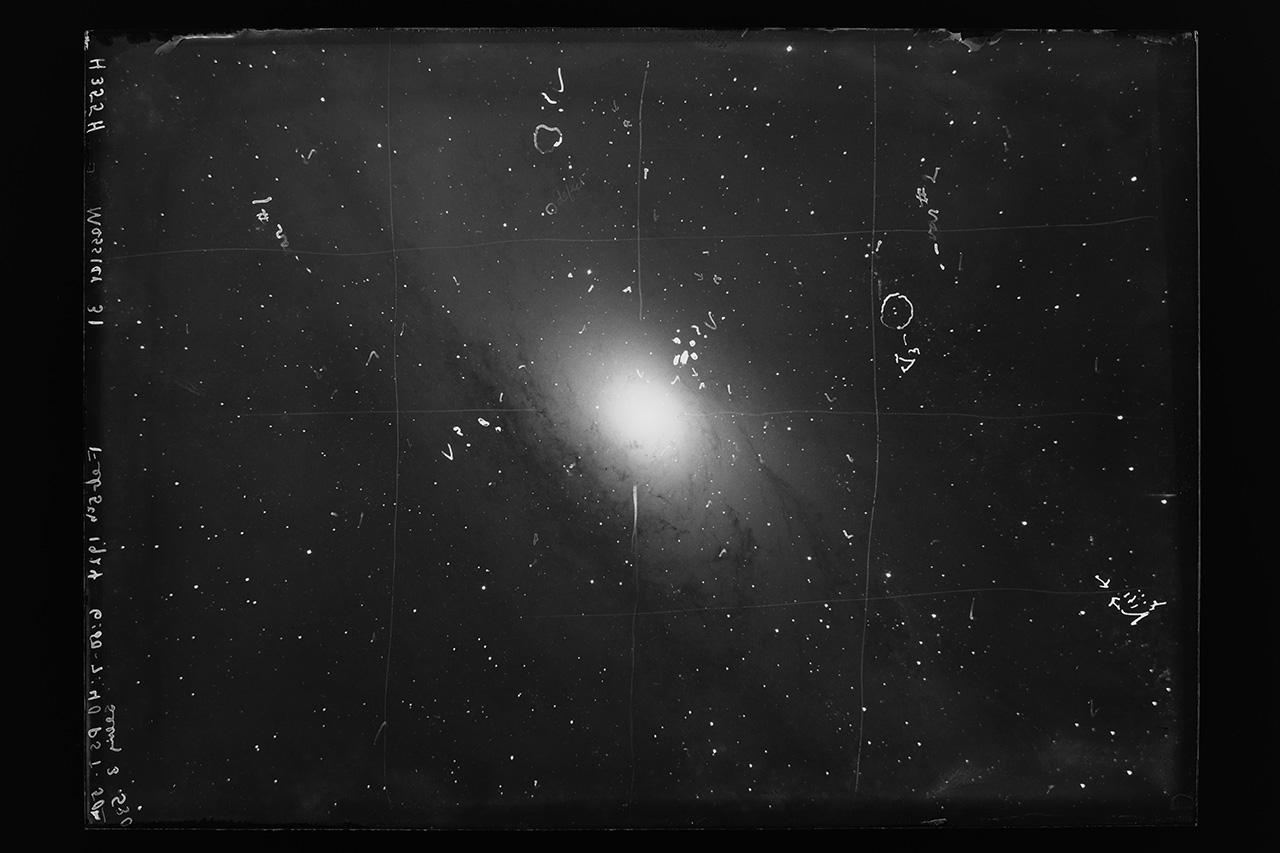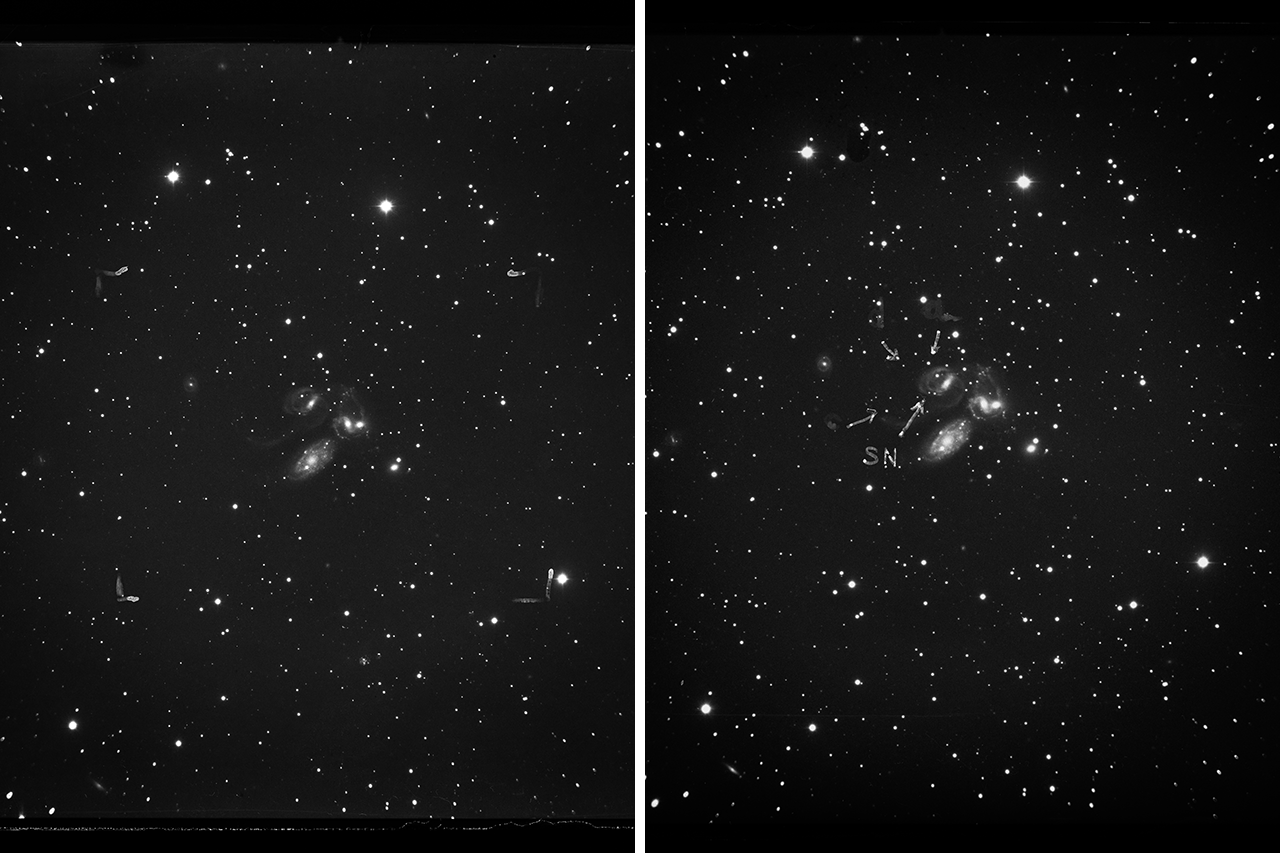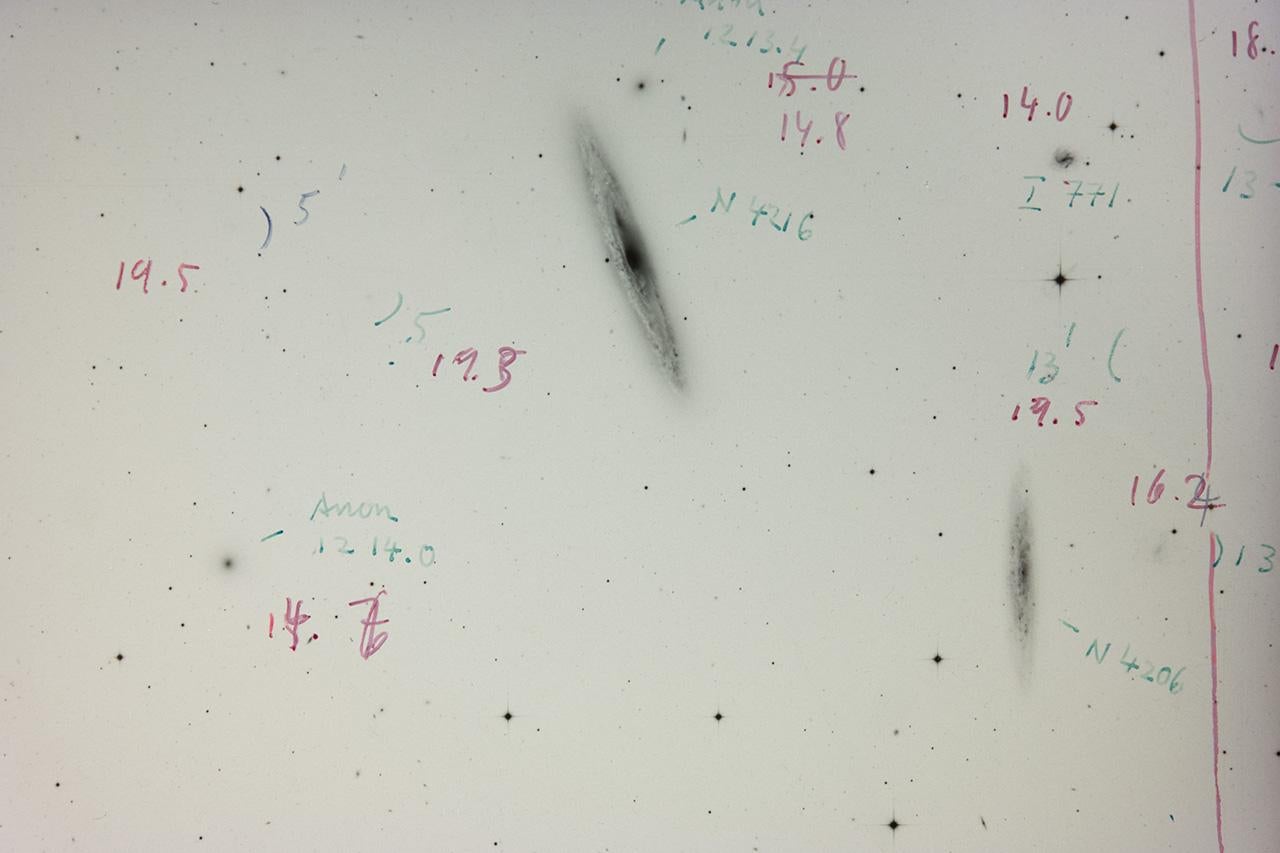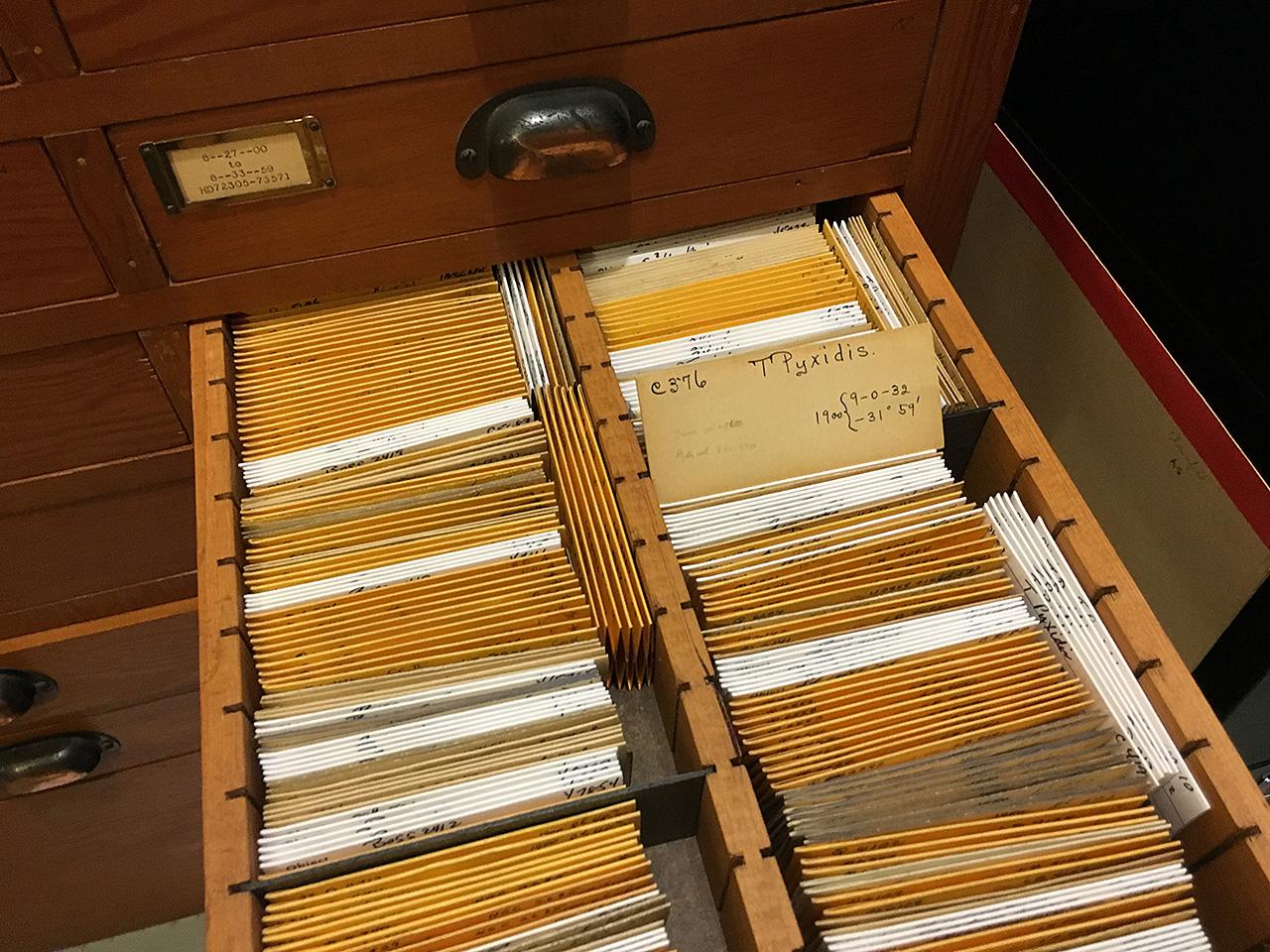On a clear Christmas morning atop Mount Wilson, before the first tentacles of dawn struck the Los Angeles sprawl 5,700 feet below, George Willis Ritchey was capturing the most spectacular view of the “Great Nebula of Orion” anyone had ever seen. For close to four hours, he had been standing at the base of an enormous, steel-framed telescope, making minute adjustments as the machine tracked the nebula across the night sky.
The year was 1908, and the 60-inch reflector, which Ritchey had engineered and newly built, was the largest and most powerful in the world. As its huge curved mirror collected the nebular light, the incoming photons slowly exposed the emulsion on a photographic glass plate roughly the size of an iPad. Later, an assistant would develop the negative and label it “Ri-0”—the inaugural scientific image from Ritchey’s state-of-the-art scope.
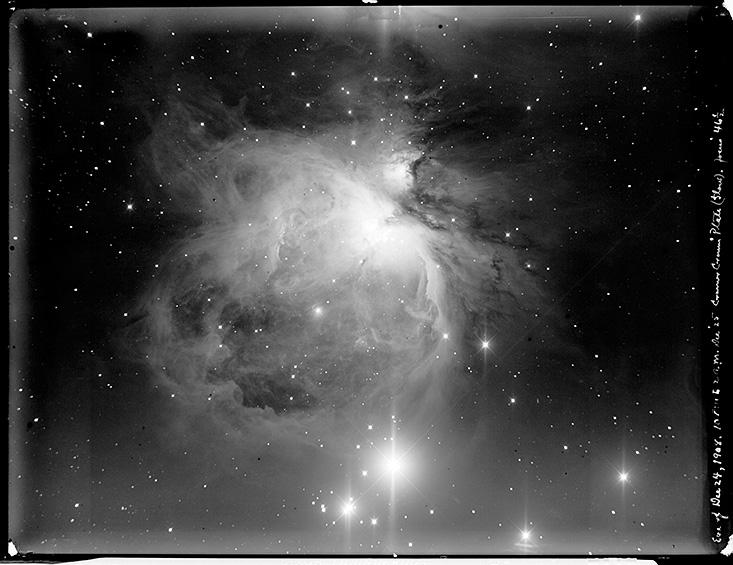
Today, Ri-0 is one of more than 200,000 astronomical plates archived at the main offices of the Carnegie Observatories, in Pasadena, California. Made between 1892 and the early 1990s using telescopes at Mount Wilson, Palomar (near San Diego), Las Campanas (in Chile), and Kenwood (in Chicago) observatories, the plates range in size from centimeter-square slivers to pieces as large as a desktop computer screen.1
This collection, the second largest in the United States, includes some of the most important observations in astronomy in the last century. It’s these images, for instance, that sparked Edwin Hubble’s realization of the expanding universe, that led George Ellery Hale to discover the sun’s magnetic field, and that provided the empirical basis for theories of how stars and galaxies form.
Here is a sampling of the most famous, and most striking, shots.
The sun’s magnetic field
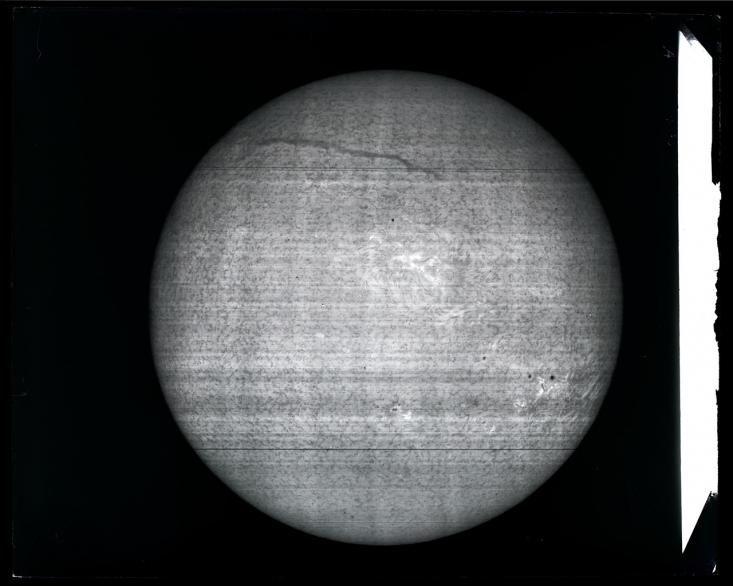
In early 1908, the solar astronomer and telescope engineer George Ellery Hale began tinkering with specialized photographic plates that were sensitive to red (long) wavelengths of light. He was particularly interested in observing the sun in the red wavelength known as H-alpha, an important signature of a star’s atmosphere. It took him a month to perfect the technique. The plate above was his first clear image, which revealed strange swirls surrounding sunspots, which Hale called flocculi. Although he (wrongly) hypothesized that the flocculi were gas tornadoes full of whirling electrons, the discovery led him to (rightly) conclude that the sun generated a magnetic field.

Hale went hunting for direct evidence of the sun’s magnetic field using a spectrograph, which separates light into a frequency spectrum, as represented by a series of vertical lines. To spread out these lines so that he could see them in detail, Hale placed an enormous, 30-foot spectrograph in a concrete well beneath the brand new 60-foot solar telescope at Mount Wilson. He captured the projected spectra on a 17-inch-long glass plate, like the one depicted above by an unknown photographer, possibly Hale. When he compared the spectral lines from the surface of the sun with lines from its sunspots, he saw that the sunspots split some of the lines into multiples while also polarizing the light. (In the above plate, the split spectral lines are labeled K and H.) This splitting, known as the Zeeman effect, provided the first confirmation of a magnetic field beyond Earth.
Hubble’s famous “VAR!” revelation

One night in the fall of 1923, Edwin Hubble took a 45-minute exposure of what was then called the Andromeda nebula. At the time, astronomers were debating whether the spiral smudges, or “nebula,” they were seeing in their telescopes were small star clusters within our own galaxy, the Milky Way, or much larger, distant “island universes.” Hubble hoped to settle the debate once and for all.
When he developed the plate, he thought he saw a “nova,” or stellar explosion, on the outskirts of one of Andromeda’s spiral arms. He labeled the tiny black dot “N.” But when he compared the plate with other photographs taken on different dates, he realized that the star was actually a Cepheid variable, a kind of star that brightens and dims on a regular schedule. By measuring its period and luminosity relative to other known variables, Hubble could then calculate its distance, thus revealing that Andromeda was a huge stellar system far outside the Milky Way. In his excitement, Hubble crossed out the “N” and wrote “VAR!” in its place.
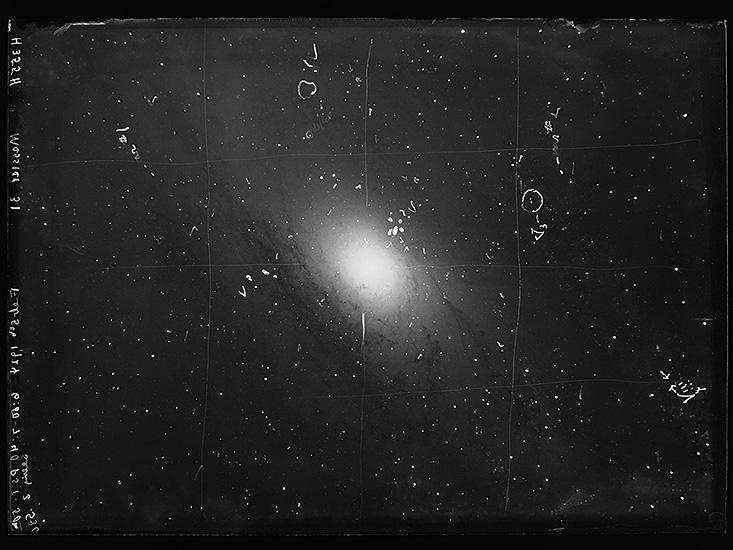
Hubble devoted dozens of plates to observing Andromeda in search of more Cepheid variables that would confirm his original discovery. Like many astronomers of his time, he adorned these plates with colorful notations—circles and arrows that identify candidate Cepheid variables, reference stars, and other notable objects. He numbered each confirmed Cepheid variable in order, often followed by exclamation points, as if he couldn’t contain his excitement. In this digital print of a plate made in early 1924, you can make out the notation “V4!!!” in the lower left corner.
“My god, it’s full of stars!”

Although Hubble had proven that Andromeda was a massive galaxy, likely full of hundreds of billions of stars, it took two decades for astronomers to finally resolve the stars in its dense, central region. The first image [above], taken on a 5-by-7 inch plate, came about under unusual circumstances.
In 1943, at the height of World War II, the astronomer Walter Baade was at work on Mount Wilson. Being a German national, Baade was barred from war duties, and so spent his nights peering at the sky above Los Angeles, which was delightfully dark due to wartime brownouts. One night, he aimed the observatory’s 100-inch telescope at Andromeda, capturing for the first time individual stars in its nucleus. This shot laid the groundwork for Baade’s classification of stars into two types: young, hot stars that occupy a galaxy’s spiral arms, and their older, cooler relatives in the galaxy’s heart.
Nearly a century later, the image still astounds. When NASA astronomer Jane Rigby visited the Carnegie archive last year, she examined the plate under a loupe. “My god, it’s full of stars!” she exclaimed.
A supernova in a strange galaxy
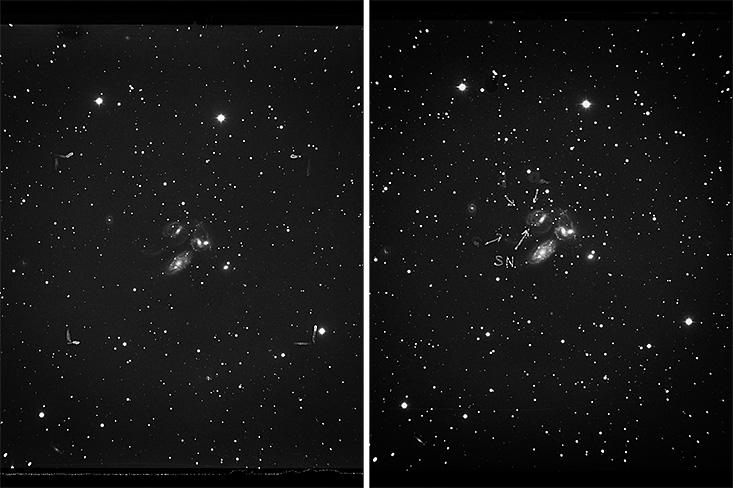
The late astronomer Halton “Chip” Arp is best known for his 1966 Atlas of Peculiar Galaxies, for which he photographed hundreds of galaxies with strange shapes and behaviors. Among these was Stephan’s Quintet, five closely interacting galaxies undergoing violent collisions as far away as 300 million light-years. In one remarkable shot, taken five years after the Atlas’s publication at Palomar Observatory, in San Diego, he identified a supernova [labeled “SN” in the right image], which had exploded a month before. (The other arrows on this plate point to reference stars, which Arp used to calculate the supernova’s coordinates in space.) In an earlier shot [left], taken in 1964, this brilliant blast is noticeably absent.
A sweeping galactic survey
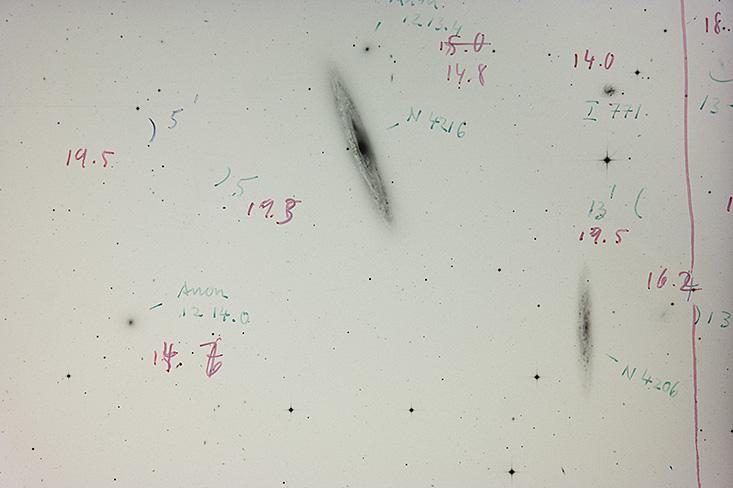
In the late 1970s and early 1980s, Allan Sandage, a onetime assistant to Hubble, and his collaborators conducted the first exhaustive survey of the Virgo Cluster, a bundle of galaxies that comprise the heart of the supercluster containing our own Milky Way. To do this, the astronomers made 67 enormous, 20-inch-square photographic plates, which together produced a catalogue of 2,096 galaxies. The image above shows just a small fraction of one plate, which Sandage made at Las Campanas Observatory, in Chile, in 1980. He painstakingly located and measured each galaxy one-by-one, noting their catalog number and magnitude directly onto the plate in red and green ink.
Cynthia Hunt is the Social Media Strategic Coordinator for the Carnegie Observatories. Since receiving her Ph.D. from the California Institute of Technology, she has worked on a variety of projects, including cosmology detectors and rocket propulsion.

























